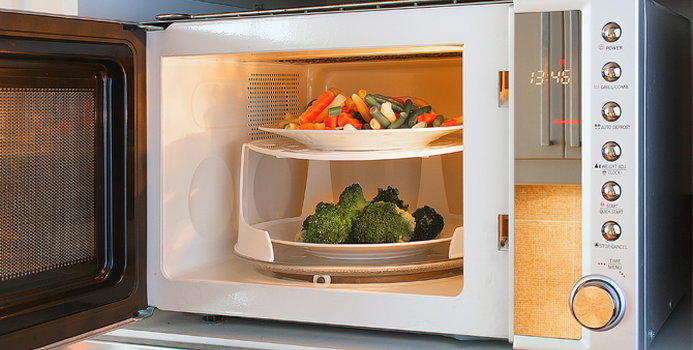Microwaves are one of the most common things found in households and often come as a regular part of any rental, like refrigerators. These convenient appliances have long been associated with myths questioning their safety. But the reality is that those claims of microwaves causing cancer or irradiating foods are just unfounded. The truth is that microwaves are one of the best ways to cook food because they heat food so quickly that minimal nutrients are lost. You also do not have to add extra fat or oil to heat food, like you might have to do on a stove top.
However, putting unsafe packaging in the microwave, like polystyrene containers or cups, is associated with real health risks. The National Research Council (NRC), has affirmed that styrene, found in many types of packaging, can be "anticipated to be a human carcinogen." BPA is also another chemical thought to have cancer-causing properties found in plastics, especially for children, but no definitive studies have been finished. If food is placed in these and heated in a microwave, chemicals from the products may transfer to the foods.
How to tell if something is microwave safe?
1. Heat it on high for 1 minute, if it stays cool when removed it is safe. If the container is warm it should be used only for reheating. If the container is hot, do not use.
2. Look for a "Microwave Safe" label on the package or container.
3. Avoid, plastic margarine tubs, plastic bags, paper bags, paper towels, Styrofoam containers, paper plates and paper napkins.
4. Keep in mind: food that comes in microwave-friendly packaging is good for one use only!
Healthy Microwave Meal Choices
Although for many years microwave meals were considered very artificial, filled with preservatives and non-nutritious foods, things have greatly improved. Nowadays, you can find meals filled with whole grains, superfoods, plant-based and without artificial flavors. These meals often contain far fewer calories that a restaurant meal or even something you might make at home.
Often microwave meals become part of a weight loss plan because the pre-portioned sizes can help keep you from overeating. Some restaurant meals are 4 times larger (or more!) than an appropriate portioned meal.
Look for meals that are full of vegetables, fruits, whole grains, beans and are lower in calories.
Tips for Healthy Microwave Meals
1. Low in sodium. Processed foods contain almost 77% of all the salt/sodium we eat in a day, so look for meals that contains less than 20% of your Daily Value for sodium. That is about 500 milligrams. You can also look for labels that say "Low Sodium", which means that they have 140 milligrams or less per serving. For most people, the Tolerable Upper Limit is 2,300 milligrams per day, which is hard to measure but equals about 1 teaspoon of salt. And it is even lower for people who are salt sensitive!
2. Low in calories. Aim for meals that are under 400 calories. If you consume 3 meals a day at 400 calories, you still have plenty of room for additional healthy snacks, fruit and even a glass of wine with dinner.
3. Low in added sugars. Carbohydrates in general should be about 45-65% of your daily calories or about 225-325 grams of carbs per day. Foods with added sugars can quickly take the space that could be filled with better complex carbohydrate choices like whole grains, vegetables, fruits and beans.
4. Choose meals that plant-based with complex carbohydrates, like whole grains and legumes.

Emily DeLacey MS, RD is a Registered Dietitian and currently working in Jamaica as a HIV/ AIDS Prevention Specialist. She attended Central Washington University for her Bachelor's Degree in Science and Dietetics and continued on after her internship to Kent State University for her Master's Degree in Science and Nutrition, with a focus on public health and advocacy. She served as a U.S. Peace Corps Volunteer in Malawi 2012-2014 working as a Community Health Advisor in a rural village, immersing in the joys of life without electricity or running water. She has been to 20+ countries and 47 of the 50 states in the US. Traveling, adventuring and experiencing new cultures has made her a passionate advocate for the equality of nutrition and wellness for all people.



